A Building roundtable during Climate Week NYC brought together architects, consultants, engineers, investors and policy-makers to explore how the construction industry can integrate sustainability into the built environment while ensuring projects remain commercially viable
The world’s cities are already feeling the strain of the climate crisis. From record-breaking temperatures to flash floods and choking wildfire smoke, the effects are no longer distant warnings – they’re reshaping how and where we live. For the construction and property industries, the question is not whether to change, but how: how can sustainability be fully integrated into the built environment while still ensuring projects remain commercially viable?
It’s a challenge that goes to the heart of what – and how – we build. Against this backdrop, Building hosted a roundtable during Climate Week NYC 2025, in partnership with the Climate Group and supported by Gleeds, to explore how the industry can deliver both environmental and economic resilience.
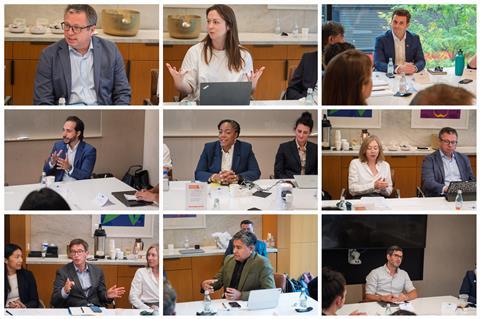
Held in Manhattan at 1 Penn Plaza, with the city’s skyline a symbol of both ambition and complexity, the event brought together architects, engineers, investors, policy-makers and consultants for a frank and fast-paced discussion. Building’s editorial director, Chloë McCulloch, chaired the 90-minute debate, which exposed both the constraints and opportunities that come with pursuing low carbon goals in a world of tight budgets and competing priorities.
As Mike Peirce, executive director for systems change at the Climate Group, remarked, “The built environment is where all our biggest challenges meet – energy, transport, industry – and where real progress will be visible to the world.” That intersection of ambition and practicality, of climate urgency and financial reality, set the tone for the conversation that followed.
Around the table
- Chair: Chloë McCulloch, editorial director, Building
- David Briefel, sustainability director and principal, Gensler
- Matt Casale, director of state mobilisation, Building Decarbonization Coalition
- Carrie Hitt, head of external affairs, Vineyard Offshore
- Elinor Hugget, sustainable environmental design, Foster + Partners
- Lucas Johnson, vice president for operations and sustainability, Nuveen Green Capital
- Nick Kassanis, CEO and president, Sustainable Investment Group
- Julie Kjestrup, head of policy and thought leadership, Velux
- Varun Kohli, director of sustainability, Corgan
- Anica Landreneau, global sustainable design director, HOK
- Maurice Loosschilder, global head of sustainability, Signify
- Stuart Lumsden, president and CEO for the Americas, Gleeds
- Kara Magoolaghan, principal, KMCG
- Mark McKenna, global sustainability director, Arcadis
- Tanya Nesbitt, partner, Thompson Hine
- Mike Peirce, executive director for systems change, Climate Group
- Chelsea Sidman, director of project management, Gleeds
The affordability question
The discussion began with the fundamental challenge facing the industry: the cost of going green. Even as sustainability becomes a moral and market imperative, affordability remains the most powerful – and political – constraint.
Carrie Hitt, head of external affairs at Vineyard Offshore, warned that energy efficiency and renewable programmes are increasingly caught in partisan crossfire. Affordability, she said, “has become a political football”, with decision-makers too often favouring short-term cost savings over long-term value.
That mindset, several around the table agreed, is precisely what needs to change. Julie Kjestrup of Velux argued that the sector must move away from a “cheapest first” mentality. “We should be talking about affordability over the lifetime, not cheap and new,” she said. Investing in reuse, retrofitting and durable materials, she added, is the real route to affordability in a changing climate.

Her point was reinforced by Elinor Hugget from Foster + Partners, who linked the discussion to wellbeing as well as cost. “If you think about only today,” she explained, “you end up with an asset which is less resilient and doesn’t last as long.” Poor-quality buildings, she said, too often fail both financially and functionally within a decade or two.
Yet as Stuart Lumsden, president and CEO for the Americas at Gleeds, pointed out, sustainability ambitions are increasingly challenged by volatile supply chains. “The volatility of materials right now can kill a project if you’re not careful,” he warned. A 50% increase in timber prices this year alone, he said, had forced several teams to revisit structural solutions once deemed cost-effective.
Anica Landreneau, global sustainable design director at HOK, highlighted how outdated incentive structures are compounding financial strain. “Many commercial property investors are underwater on construction debt,” she said. “Traditional financing and tax incentive structures just aren’t working right now.”
What emerged early in the discussion was agreement around the table that affordability and sustainability are not opposites, but aligning them requires a shift from short-term accounting to long-term value creation.
Making the business case through risk and resilience
If cost is the barrier, risk may be the bridge. As the conversation turned to investment strategy, Mark McKenna, global sustainability director at Arcadis, described a growing appetite among clients for data-driven decision-making. “Paperwork exercises are now becoming proper analytical information,” he said. “The real effects that are happening in buildings are forcing people to think about real hard decisions around cost.”
Anica Landreneau at HOK saw a similar pattern on the ground. Few clients, she admitted, are ready to adopt detailed climate scenarios, but most now accept that doing nothing is not an option. “They never do nothing,” she said. “They’re usually right down the middle – mitigating a good amount of risk, but not all of it.”
One area of opportunity lies in rethinking relationships with insurers. Hugget at Foster + Partners urged project teams to engage insurers earlier, explaining that underwriters are “hungry for data” on how design measures perform during climate events. Even basic dialogue about site selection or building type, she said, can influence the cost of risk – and, by extension, the business case for sustainability.
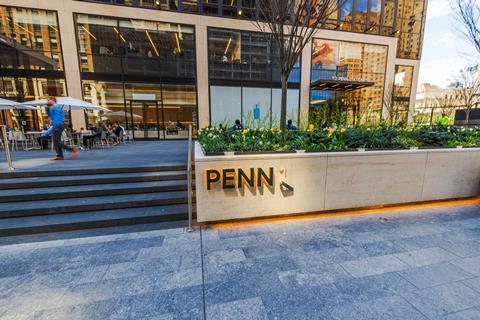
Lucas Johnson from Nuveen Green Capital agreed, adding nuance from the investor perspective, noting that while flood risk has been considered in real estate for some time, other climate hazards are less well understood at the property level.
He said: “Heat stress, storms – these aren’t really mapped property by property yet,” he explained. He said while insurance is renewed annually, “who knows what the [climate risks] be in 10 to 20 years?”, highlighting the uncertainty investors face when assessing long-term climate risk.
From a legal standpoint, Tanya Nesbitt at Thompson Hine was unequivocal: “Risk is here. There’s no way to really escape it.”
But, she said, risk looks different depending on the business and the project. Her goal is to help clients make sustainability inseparable from standard practice: “I like to counsel clients [to think] about their sustainability commitments the same way they would think about safety. It should be infused into every step.”
And she went on to warn that legal risks are already emerging around data centre schemes that are needed to power AI because some communities are pushing back against developments where they feel there has been no discussion of potential environmental impacts on them caused by the increased water and energy demands. “There is lots of litigation to come out of the AI space,” she added.
The equity dimension
While much of the discussion focused on investments from a private sector client perspective, David Briefel at Gensler reminded the room that climate has an impact at a community level, and such effects are felt first and hardest by those least able to adapt. “The communities that are most affected are underserved communities,” he said, calling for investment in local facilities that can act as safe havens during extreme events. He cited efforts he has been involved with in Costa Rica creating shade structures that require small amounts of investment.
Kara Magoolaghan of KMCG, who works extensively in affordable housing, described the sector as standing at a crossroads. Much of the US’s post-war housing stock, she said, “is at the end of its useful life”. These ageing buildings not only lock residents into higher energy bills but also expose them to greater health and resiliency risks. She also highlighted the particular needs of some rural and smaller communities that often do not have the same access to investment in new technologies as is available in big cities, calling for “olive branches” to be extended to improve their resilience to climate change.
Nesbitt at Thompson Hine added that under the Biden administration the Inflation Reduction Act set up resiliency grants for such communities, but now these measures are being scrapped it leaves a gap that may be filled by state-driven litigation and regulation but more likely by partnerships with private industry.
Focusing on wellbeing issues in communities is key to winning their support for projects, and according to Nick Kassanis at Sustainable Investment Group our choice of words matter in this context: “[We need to] not just talk about the buildings, but the people.” He added: “An average person cares about their community, their family, their kids; and when you talk about air quality and pollution, those are things they can grasp and you get buy-in.”
The question of how to direct capital into these communities provoked serious reflection. It was a theme that would resurface throughout the session: sustainability cannot succeed without social equity.
Infrastructure-scale solutions
For others, the key to equity and resilience lies in scale. Varun Kohli at Corgan pointed to Battery Park City in Lower Manhattan as a case study in district-wide protection. “That entire project is to protect Battery Park City,” he said. “It takes that entire region off the FEMA flood map and reduces insurance premiums for the next 40-50 years.”
Matt Casale from the Building Decarbonization Coalition added that technologies such as thermal energy networks could provide similar community-wide benefits. He cited a Texas community that recovered from an ice storm in just six hours while neighbouring areas were powerless for weeks. “These are the types of things that at the outset we need to be looking at,” he said.
Yet, as Kjestrup of Velux reminded the group, scaling these solutions depends as much on culture as on technology. District heating thrives in Denmark, she noted, because it is mandatory and widely accepted. Replicating that model elsewhere, particularly in the US, will require significant shifts in regulation and public expectation.
The collaboration imperative
As the discussion unfolded, one theme cut across every issue: collaboration. The complexity of the challenge means no organisation can solve it alone. McKenna described how Arcadis has been developing “impact partnerships” with unlikely allies, from energy companies to tech firms. “We need to stop pretending we can do everything,” he said. “We compete, but we also collaborate.”
>> Also read: Climate leaders push ahead despite Trump’s ‘green scam’ claims
>> In pictures: Ed Miliband and Mark Ruffalo lead calls for accelerated action at Climate Week NYC
Peirce from the Climate Group said a big focus for him is climate action through “systems change”, looking at how sectors such as energy, heavy industry, transport and food each act as systems that affect one another. He described buildings as “an interesting interface of the different systems” and how looking at climate measures through the lens of buildings could join the dots between different industries and enable more cross-sector collaboration.
However, collaboration also requires communication. Chelsea Sidman at Gleeds observed that many companies still underestimate both the urgency of climate risk and the expertise available to address it. She said: “So many don’t even know the severity of this topic.” She described how some companies have multimillion-dollar capital programmes each year but “not an ounce of that money is going towards big-picture thinking for infrastructure projects or carbon mitigation. How can we as consultants start to bring that messaging into those Q4 planning sessions?”
Her question underscored a critical gap: consultants and designers may have the knowledge, but they need to find more effective ways to influence the decision-makers controlling the budgets.
Inevitably, the conversation turned to politics. Casale at the Building Decarbonization Coalition noted that, even amid a polarised national climate debate in the US, meaningful collaboration is still happening “under the surface”. His coalition, he explained, convenes environmental justice groups, major manufacturers such as LG and Samsung, and state agencies to share solutions. “It’s a big table,” he said, “and it could be a lot bigger.”
Lumsden at Gleeds pointed to an example of government-to-government collaboration in the rebuilding efforts after the El Nino disaster hit Peru in 2017. Being part of the wider team working on new infrastructure, Lumsden described how $30bn is being invested to ensure future flooding events do not have the same devastating impact: “If other governments didn’t get involved and El Nino comes through [in future years], guess what? They are back to where they were – and it was desperate [back then].”
Technology and data
If policy sets the rules, technology provides the tools. Maurice Loosschilder of Signify described how the company is applying circular economy principles by refurbishing and redeploying lighting fixtures rather than replacing them. “We do see more and more of our customers asking for this,” he said. “A few years ago, this was new.”
For Landreneau, the next step is improving data transparency so that the industry can understand which design measures deliver real-world performance. Insurers, she said, “don’t have data on how specific measures, in repeatable patterns, impact those types of events”.
Lumsden agreed, arguing that technologies such as AI could play a major role in bridging that data gap. “We’ve got to use it for what it’s good for,” he said, “to collect the really important information that helps drive this forward.”
Priorities for the next 18 months
As the debate drew to a close, the group identified the priorities that could sustain progress over the next 18 months to three years.
McKenna at Arcadis stressed the importance of clearly articulating the financial case for sustainability. “If we don’t step out and boldly define the financial value proposition for ourselves, it will be done for us,” he warned.
For Sidman at Gleeds, the key is building momentum over time: “Being okay with putting down where they can get and just starting is a big means of encouragement,” she said, urging firms to set realistic, measurable goals rather than waiting for perfect conditions.
Data was another recurring priority. Participants agreed that richer, more granular information on building performance could help refine business cases and identify cost-effective strategies.
Nick Kassanis of the Sustainable Investment Group added that the industry should “pair innovation with practical solutions”, warning against overcomplication. His point was that it is critical to balance forward-thinking innovation with a focus on improving the fundamentals of project execution to avoid waste, errors and miscommunication. “We can design net zero buildings – great,” he said. “Let’s do it efficiently, well, without change orders or value engineering things out.”
Kohli at Corgan emphasised knowledge transfer, noting that the expertise to deliver net zero projects already exists in developed markets. “The challenge is getting that knowledge to the Global South,” where most new construction will take place, he said. Meanwhile, Hugget at Foster + Partners called for structured “green leasing” models to align landlords and tenants on energy, maintenance and carbon reduction goals.
Looking ahead
By the end of the session, there was consensus that while financial and regulatory hurdles remain, the tools and know-how to decarbonise the built environment are already in hand. The real task is deployment – at scale, with urgency, and in a way that rewards both environmental and economic outcomes.
As participants filed out into the buzz of Climate Week, their discussion reflected a broader truth: the climate challenge will indeed change the way we build, but it also offers the opportunity to redefine what building value means. If sustainability can be made to pay, it won’t just future-proof projects – it will reshape the industry itself.
Five takeaways from the Climate Week NYC roundtable
1. Affordability is not the enemy of sustainability
Participants agreed that “cheap and new” thinking must give way to long-term affordability based on whole-life value. As Velux’s Julie Kjestrup put it, “We should be talking about affordability over the lifetime, not cheap and new.” Reuse and retrofit emerged as vital strategies for balancing cost and carbon.
2. Risk is becoming the new language of sustainability
Clients and insurers are starting to treat climate resilience as a financial issue, not just an ethical one. “Risk is here,” warned Thompson Hine’s Tanya Nesbitt. By quantifying risk and engaging insurers earlier, project teams can strengthen the business case for sustainability.
3. Equity and resilience go hand in hand
From community-scale projects to district heating systems, equity was a recurring theme. “The communities that are most affected are underserved communities,” said Gensler’s David Briefel. True sustainability, the group agreed, must also mean fair access to resilience.
4. Collaboration is the only way forward
Whether between designers and financiers, or across entire industries, the scale of the challenge demands joint effort. “We need to stop pretending we can do everything,” said Arcadis’s Mark McKenna. Collaboration, participants stressed, is where innovation will accelerate.
5. Data will drive the next wave of action
Better information on how buildings perform is key to smarter investment and regulation. As Signify’s Maurice Loosschilder noted, circular solutions are gaining traction as clients demand measurable outcomes. “We’re seeing more and more customers asking for this,” he said.




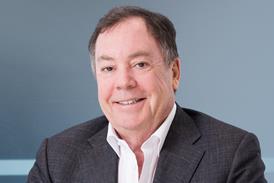



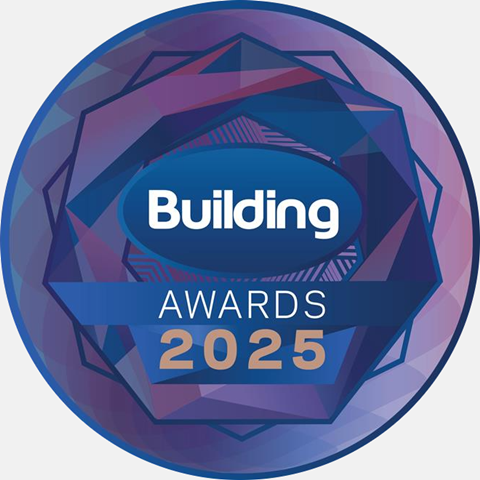
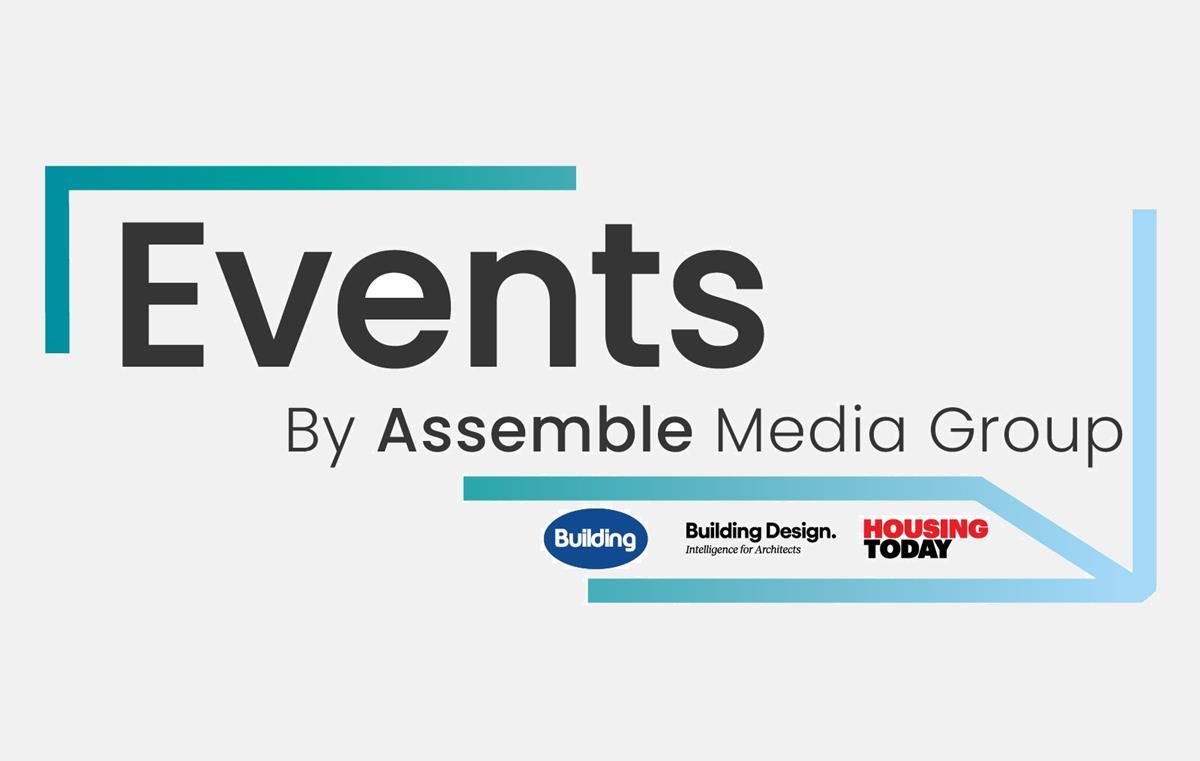


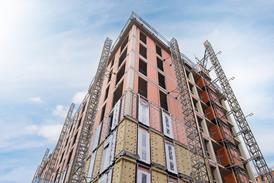


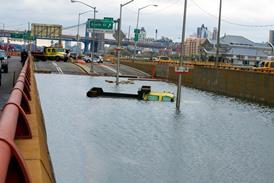

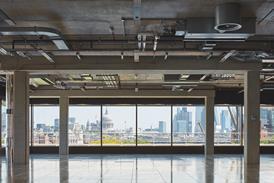

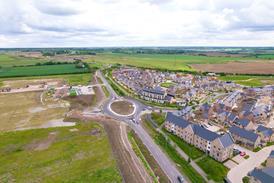







No comments yet